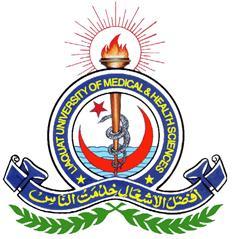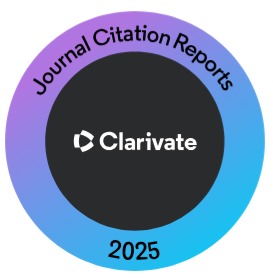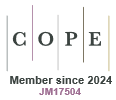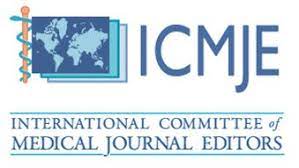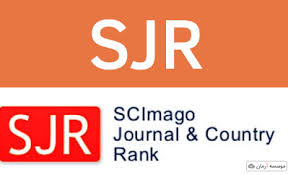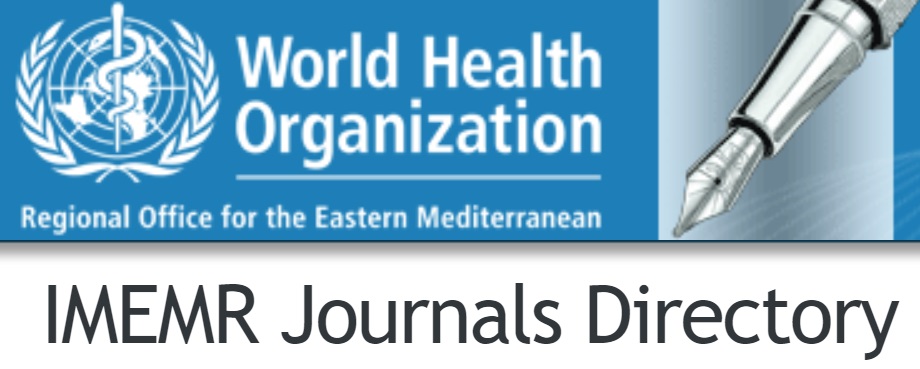Stepping Into Danger: Risk Factors for Diabetic Foot Infections in Pakistan
Keywords:
Diabetes mellitus, diabetic foot ulcer, Peripheral Neuropathy, peripheral arterial diseaseAbstract
OBJECTIVE: This study aimed to identify the patient-related risk factors for diabetic foot infections and assess their impact on disease progression. METHODOLOGY: A Cross-sectional study was conducted at Dow University Hospital, Karachi, from June to December 2023. A total of 150 diabetic patients were included using a non-probability purposive sampling technique. The inclusion criteria for this study consisted of diagnosed diabetic patients aged (57.11±9.83) years, with or without diabetic foot infections, who were willing to participate and provide consent. The exclusion criteria included non-diabetic individuals, patients with foot ulcers or infections unrelated to diabetes (e.g; trauma), those with incomplete clinical records or missing data, and individuals unwilling to participate. Data were collected using a self-designed questionnaire and clinical records, focusing on demographics, biochemical markers, and clinical factors such as peripheral neuropathy, peripheral arterial disease, osteomyelitis, and smoking history. Statistical analysis was performed using SPSS version 23. RESULTS: The study revealed that peripheral neuropathy (OR = 3.2), peripheral arterial disease (OR = 3.1), and smoking (OR = 2.0) were significant independent risk factors for diabetic foot infections. Infected patients also exhibited poor glycemic control, as evidenced by elevated HbA1c levels and an abnormal lipid profile characterized by higher LDL-c and lower HDL-c levels compared to the uninfected group. CONCLUSION: Peripheral neuropathy, Peripheral arterial disease, and smoking are major risk factors for diabetic foot infections.References
Ahmad E, Lim S, Lamptey R, Webb DR, Davies MJ. Type 2 diabetes. Lancet. 2022; 400(10365): 1803-20.
Lawrence JM, Divers J, Isom S, Saydah S, Imperatore G. Trends in prevalence of type 1 and type 2 diabetes in children and adolescents in the US, 2001-2017. JAMA. 2021; 326(8): 717-27.
Quattrin T, Mastrandrea LD, Walker LS. Type 1 diabetes. Lancet. 2023; 401(10394): 2149-62.
Galicia-Garcia U, Benito-Vicente A, Jebari S. Pathophysiology of type 2 diabetes mellitus. Int J Mol Sci. 2020; 21(17): 6275.
Wei J, Tian J, Tang C, Fang X, Miao R, Wu H et al. The influence of different types of diabetes on vascular complications. J Diabet Res. 2022; 2022(1): 3448618.
Rasheed R, Pillai GS, Kumar H, Shajan AT, Radhakrishnan N, Ravindran GC. Relationship between diabetic retinopathy and diabetic peripheral neuropathy-neurodegenerative and microvascular changes. Indian J Ophthalmology. 2021; 69(11): 3370-5.
Patil SR, Chavan AB, Patel AM, Chavan PD, Bhopale JV. A review on diabetes mellitus its types, pathophysiology, epidermiology and its global burden. J Res Appl Sci Biotechnol. 2023; 2(4): 73-9.
Reardon R, Simring D, Kim B, Mortensen J, Williams D, Leslie A. The diabetic foot ulcer. Australian J Gen Pract. 2020; 49(5): 250-5.
Edmonds M, Manu C, Vas P. The current burden of diabetic foot disease. J Clin Orthop Trauma. 2021; 17: 88-93.
Rubitschung K, Sherwood A, Crisologo AP, Bhavan K, Haley RW, W. Pathophysiology and molecular imaging of diabetic foot infections. Int J Mol Sci. 2021; 22(21): 11552.
Yates TH, Cooperman SR, Shofler D, Agrawal DK. Current concepts underlying the pathophysiology of acute Charcot neuroarthropathy in the diabetic foot and ankle. Expert Rev Clin Immunol. 2020; 16(8): 839-45.
Faraz A, Ashraf H, Khalid S, Fatima R. Foot pressure abnormalities, radiographic, and Charcot changes in the diabetic foot. Diabetic Foot Ulcer: An Update. 2021: 121-34.
Hawkins BK, Barnard M, Barber KE, Stover KR, Cretella DA et al. Diabetic foot infections: A microbiologic review. Foot. 2022; 51(7): 1877.
Lauri C, Leone A, Cavallini M, Signore A, Giurato L. Diabetic foot infections: the diagnostic challenges. J Clin Med. 2020; 9(6): 1779.
Malik RA, Andag?Silva A, Dejthevaporn C, Hakim M, Koh JS, Pinzon R et al. Diagnosing peripheral neuropathy in South?East Asia: a focus on diabetic neuropathy. J Diabet Invest. 2020; 11(5): 1097-103.
Balasubramanian GV, Chockalingam N, Naemi R. The role of cutaneous microcirculatory responses in tissue injury, inflammation and repair at the foot in diabetes. Front Bioengineer Biotechnol. 2021; 9: 732753.
Ferreira RC. Diabetic foot. Part 1: ulcers and infections. Revista brasileira de ortopedia. 2020; 55(4): 389-96.
Lee YJ, Han KD, Kim JH. Association among current smoking, alcohol consumption, regular exercise, and lower extremity amputation in patients with diabetic foot: nationwide population-based study. Endocrinol Metabolism. 2022; 37(5): 770-80.
Li T, Li Z, Huang L, Tang J, Ding Z, Zeng Z et al. Cigarette Smoking and Peripheral Vascular Disease are Associated with Increasing Risk of ESKAPE Pathogen Infection in Diabetic Foot Ulcers. Diabetes Metab Syndr Obes. 2022: 15: 3271-83
Surya ND, Setiawan J. The Relationship Between Smoking Status And Diabetic Foot Severity. Sriwijaya J Med. 2020; 3(3): 23-31.
Basra R, Papanas N, Farrow F, Karalliedde J, Vas P. Diabetic foot ulcers and cardiac autonomic neuropathy. Clin Therapeut. 2022; 44(2): 323-30.
Ponirakis G, Elhadd T, Al Ozairi E, Brema I, Chinnaiyan S, Taghadom E. Prevalence and risk factors for diabetic peripheral neuropathy, neuropathic pain and foot ulceration in the Arabian Gulf region. J Diabet Invest. 2022; 13(9): 1551-9.
Pitocco DS, Spanu T, Di Leo M, Vitiello R, Rizzi A, Tartaglione L et al. Diabetic foot infections: a comprehensive overview. Eur Rev Med Pharmacol Sci. 2019; 2(8): 23-31.
Janbakhsh A, Abedinfam M, Sobhiyeh MR, Rezaie M, Aslani PS, Vaziri S et al. Prevalence of peripheral artery disease in patients with infectious diabetic foot ulcer in Imam Reza Hospital in Kermanshah during 2019–2020. J Educ Health Promotion. 2021; 10(1): 170-78.
Ryan E, Ahn J, Wukich DK, La Fontaine J, Crisologo PA, Malone M. Effect of sensory neuropathy on the predictive value of inflammatory biomarkers for osteomyelitis in diabetic and non-diabetic patients with foot infections. J Am Podiatric Med Assoc. 2022; 112(2): 229-38.
Li X, Cheng Q, Du Z, Zhu S, Cheng C. Microbiological concordance in the management of diabetic foot ulcer infections with osteomyelitis, on the basis of cultures of different specimens at a diabetic foot center in China. Diabetes Metab Syndr Obes. 2021; 6(9): 1493-503.
Ikura K, Hanai K, Shinjyo T, Uchigata Y. HDL cholesterol as a predictor for the incidence of lower extremity amputation and wound-related death in patients with diabetic foot ulcers. Atherosclerosis. 2015; 239(2): 465-9.
Pei E, Li J, Lu C, Xu J, Tang T, Ye M et al. Effects of lipids and lipoproteins on diabetic foot in people with type 2 diabetes mellitus: a meta-analysis. J Diabet Complications. 2014; 28(4): 559-64.
Casadei G, Filippini M, Brognara L. Glycated hemoglobin (HbA1c) as a biomarker for diabetic foot peripheral neuropathy. Diseases. 2021; 9(1): 16-22.
Downloads
Published
How to Cite
Issue
Section
License
Copyright (c) 2025 Journal of Liaquat University of Medical & Health Sciences

This work is licensed under a Creative Commons Attribution-NonCommercial-ShareAlike 4.0 International License.
Submission of a manuscript to the journal implies that all authors have read and agreed to the content of the undertaking form or the Terms and Conditions.
When an article is accepted for publication, the author(s) retain the copyright and are required to grant the publisher the right of first publication and other non-exclusive publishing rights to JLUMHS.
Articles published in the Journal of Liaquat University of Medical & health sciences are open access articles under a Creative Commons Attribution-Noncommercial - Share Alike 4.0 License. This license permits use, distribution and reproduction in any medium; provided the original work is properly cited and initial publication in this journal. This is in accordance with the BOAI definition of open access. In addition to that users are allowed to remix, tweak and build upon the work non-commercially as long as appropriate credit is given and the new creations are licensed under the identical terms. Or, in certain cases it can be stated that all articles and content there in are published under creative commons license unless stated otherwise.


